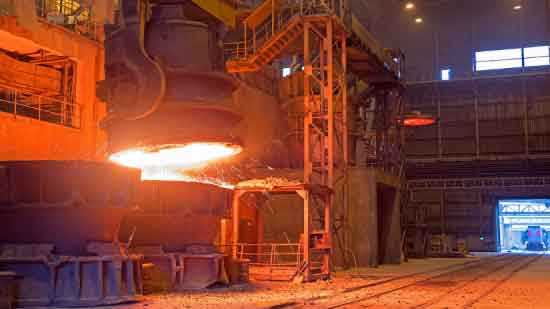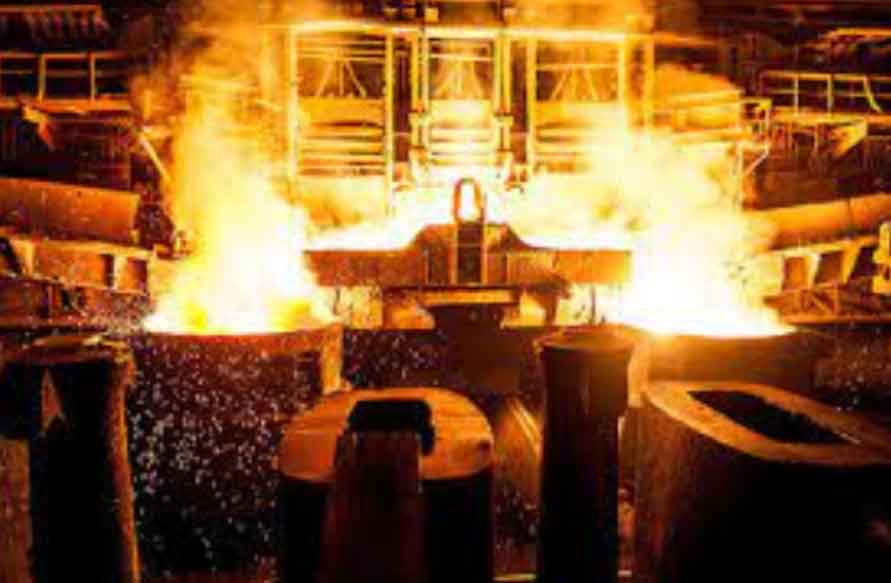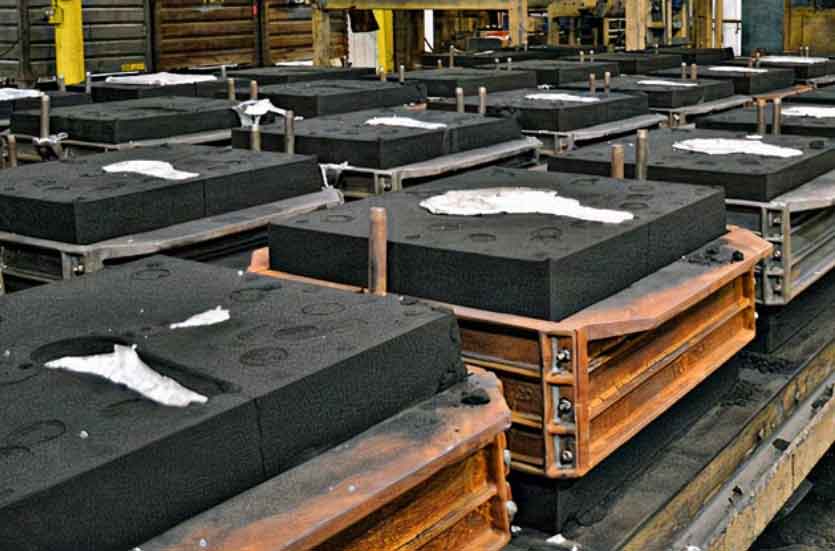Chapter 1: Looking for Sand Casting Manufacturers
Find potential sand casting manufacturers. Here’s a step-by-step approach you can take:
- Search Engines: Use search engines like Google to find sand casting manufacturers. Use keywords such as “sand casting manufacturers,” “sand casting suppliers,” or “custom sand casting.” You can also add specific location or material preferences to narrow down your search.
- Industry Directories and Catalogs: There are online industry directories and catalogs that list manufacturing companies based on their specialization. Websites like Thomasnet, Alibaba, and Global Sources can help you find sand casting manufacturers.
- Trade Shows and Exhibitions: Attend trade shows, exhibitions, and industry events related to manufacturing, casting, or foundry. These events provide an opportunity to directly interact with manufacturers, understand their capabilities, and assess the quality of their products.
- Trade Associations and Networks: Look for industry-specific trade associations related to casting, foundry, or manufacturing. These associations often have member directories that can help you find reputable manufacturers.
- Online Manufacturing Platforms: Consider using online platforms that connect buyers with manufacturers, such as MFG.com or Maker’s Row. These platforms can help you find manufacturers with the specific capabilities you need.
- Social Media and Forums: Join industry-specific forums, groups, and social media platforms like LinkedIn. Participate in discussions and ask for recommendations from professionals in the field.
- Supplier Verification: Once you’ve identified potential manufacturers, it’s important to verify their reputation and experience. Check their websites for certifications, client testimonials, and case studies. Look for any negative reviews or complaints as well.
- Request Quotes and Samples: Contact the shortlisted manufacturers and request quotes for your specific sand casting needs. Ask about their experience, materials used, production process, quality control measures, and lead times. If possible, request samples to assess the quality of their work firsthand.
- Visit Facilities (if possible): If feasible, consider visiting the manufacturing facilities of the top candidates. This can give you a better understanding of their operations, equipment, and quality control practices.
- Negotiate and Choose: Compare the quotes, capabilities, and reputations of the manufacturers you’ve researched. Choose a manufacturer that aligns with your requirements, budget, and quality expectations. Don’t forget to negotiate terms before finalizing the contract.
Choosing the right manufacturer is crucial for obtaining high-quality products and services. Take your time to research and evaluate your options thoroughly before making a decision.

Chapter 2: Background Investigation of Sand Casting Manufacturers
Conduct a thorough background investigation of potential sand casting manufacturers using publicly available information and general steps.
- Identify Potential Manufacturers: Start by searching for potential sand casting manufacturers through search engines, industry directories, trade associations, and business directories.
- Company Website: Visit the company websites of the potential manufacturers. Look for sections like “About Us,” “History,” “Services,” “Products,” and “Quality Assurance.” This information can give you an overview of their background, capabilities, and processes.
- Social Media Pages: Check the company’s social media profiles (if available) on platforms like LinkedIn, Facebook, Instagram, Twitter, and YouTube. These profiles may provide insights into their recent activities, projects, and engagement with customers.
- Customer Reviews and Testimonials: Search for customer reviews and testimonials related to the manufacturers. Look for reviews on platforms like Google Reviews, Yelp, Trustpilot, or industry-specific forums. Reviews can give you an idea of their reputation, quality of products, and customer satisfaction.
- History and Background: Explore the manufacturer’s history and background. Look for details like when they were established, any significant milestones, and their growth trajectory over the years. This can indicate their experience and stability.
- Processes and Equipment: Learn about the sand casting processes they use and the type of equipment they have. Look for information about the materials they work with, the size and complexity of the castings they can produce, and any specialized processes they offer.
- Quality Control Measures: Investigate the quality control measures the manufacturer has in place. Check for certifications such as ISO 9001, ISO 14001, or other industry-specific certifications. Look for information about their testing procedures, inspection techniques, and overall commitment to quality.
- Project Portfolio: If available, explore their project portfolio or case studies. This can provide insights into the types of industries they serve, the complexity of projects they’ve handled, and the diversity of their capabilities.
- Contact and Communication: Reach out to the manufacturers with any specific questions you have. This can be a great opportunity to gauge their responsiveness, willingness to provide information, and their overall professionalism.
- Industry Reputation: Search for news articles, press releases, and any other information related to the manufacturer’s industry reputation. This can help you understand their standing within the industry and any notable achievements.
- Comparative Analysis: After gathering information from multiple manufacturers, create a comparative analysis to evaluate their strengths, weaknesses, capabilities, and alignment with your requirements.
- Site Visits (If Possible): If feasible, consider arranging site visits to the manufacturers’ facilities. This can give you a firsthand look at their operations, equipment, and overall working environment.
The quality of information you gather will depend on the transparency of the manufacturers and the availability of relevant information online. Always strive to cross-reference information from multiple sources for a more accurate assessment.

Chapter 3: Contact Sand Casting Manufacturers
Approach contacting sand casting manufacturers and the kind of information you might want to inquire about. To get started, here’s a template you could use as an initial email to reach out to sand casting manufacturers:
Inquiry Regarding Sand Casting Services Dear [Manufacturer’s Name],
I hope this email finds you well. My name is [Your Name] and I am reaching out to inquire about the sand casting services your company provides. I am interested in understanding your capabilities, service scope, delivery time, and customization options.
As we are considering potential partners for an upcoming project, I would greatly appreciate it if you could provide me with more information about the following aspects:
1. Capabilities: Could you please provide details about the range of materials and sizes you can work with? Do you specialize in specific industries or types of products?
2. Service Scope: What types of sand casting processes do you offer? Are there any specific techniques or methods your company excels in?
3. Delivery Time: What is your typical lead time for sand casting projects? Are there any factors that could influence project timelines?
4. Customization Options: Do you offer customization services to meet specific project requirements? How flexible is your company in accommodating unique requests?
5. Quality Assurance: What quality control measures do you have in place to ensure the final products meet the required standards?
6. Previous Work: Could you share some examples of projects you have worked on in the past? This would help us understand your expertise better.
7. Pricing: While I understand that pricing can vary based on project specifics, could you provide a general idea of your pricing structure or factors that contribute to the overall cost?
8. Communication: What is the preferred method of communication for discussing project details and updates?
Are you open to arranging a call or virtual meeting to discuss our requirements in more detail? I appreciate your time and assistance in providing this information. Please feel free to reach out to me at [Your Email Address] or [Your Phone Number] if you need any clarification or if there’s a convenient time for a call.
Thank you for considering my inquiry. I look forward to the opportunity of potentially working together.
Best regards,
[Your Name]
[Your Title]
[Your Company Name]
[Your Contact Information]
Remember to customize the template with your specific details and tailor it to your needs. Once you receive responses from manufacturers, you can continue the conversation through email, phone calls, or even schedule visits to their production facilities to gain a deeper understanding of their capabilities and offerings.

Chapter 4: Visit the Production Facilities of Sand Casting Manufacturers
Visiting these facilities can indeed provide valuable insights into their production processes, equipment, and quality control standards. Here’s a general outline of how you might go about arranging such a visit:
- Research and Identify Manufacturers: Start by researching and identifying sand casting manufacturers that you’re interested in visiting. Look for companies that are known for their quality, experience, and reputation in the industry.
- Contact the Manufacturers: Reach out to the selected manufacturers to express your interest in visiting their production facilities. You can do this through emails, phone calls, or by using any contact forms available on their websites. Provide details about your purpose for the visit and the information you’re hoping to gather.
- Explain Your Intent: In your communication with the manufacturers, clearly explain the purpose of your visit. Highlight that you’re interested in gaining a better understanding of their production process, equipment setup, and quality control measures. Emphasize the educational and informational nature of your visit.
- Schedule the Visit: Once you’ve established contact with the manufacturers and they’ve shown interest, work with them to schedule a suitable date and time for the visit. Be flexible and accommodating to their schedules as well.
- Preparation: Before your visit, make sure you’re well-prepared. Research the basics of sand casting and the manufacturing process so that you can ask informed questions during your visit. Bring along a notebook, camera, or other recording devices to document your observations and take notes.
- Safety Precautions: Keep in mind that industrial production facilities can be hazardous environments. Make sure you follow any safety guidelines provided by the manufacturer. Wear appropriate clothing, footwear, and any safety gear required for the visit.
- During the Visit: While at the facility, pay close attention to the entire production process. Observe the workflow, equipment usage, and the roles of different personnel. Take notes on the steps involved, the types of equipment being used, and any automation or manual labor processes.
- Ask Questions: Engage with the employees and supervisors during your visit. Ask questions about specific steps in the production process, the types of materials used, quality control checks, and any challenges they face. The more you inquire, the better insights you’ll gain.
- Quality Control and Testing: Focus on how the manufacturer ensures quality control throughout the production process. Learn about the testing methods they use to ensure the final product meets the required standards.
- Thank You and Follow-Up: After the visit, express your gratitude to the manufacturer for allowing you to tour their facilities. If you promised to provide them with feedback or any insights you gained, make sure to follow up with a summary of your observations and thoughts.
Remember that every manufacturer’s process can vary, so visiting multiple facilities if possible can give you a broader perspective on the industry. Approach the visit with a curious and respectful attitude, as manufacturers are often proud to showcase their operations to interested parties.

Chapter 5: Understanding Customer Cases of Sand Casting Manufacturers
Understanding customer cases of sand casting manufacturers involves examining real-world examples of interactions between manufacturers and their clients in the context of sand casting processes. Sand casting is a widely used manufacturing technique for producing metal parts and components. Here are some steps to understand customer cases:
- Identify Relevant Case Studies: Look for case studies, success stories, or customer testimonials provided by sand casting manufacturers. These can often be found on the manufacturers’ websites, industry publications, or through online searches. These sources will give you insights into how manufacturers have addressed specific customer needs and challenges.
- Analyze Customer Requirements: In each case study, pay attention to the customer’s initial requirements. This might include the type of metal or alloy needed, the desired dimensions and specifications of the part, quantity required, and any special features or finishing requirements.
- Manufacturing Process: Understand how the sand casting manufacturer approached the production process. What techniques and methodologies did they use to create the required parts? This could involve preparing molds, selecting appropriate sand mixtures, melting and pouring the metal, and handling post-casting operations like cleaning, finishing, and quality control.
- Customization and Innovation: Examine whether the manufacturer offered any customization or innovative solutions to meet the customer’s specific needs. This could involve modifications to the casting process, the development of unique molds, or the incorporation of advanced technologies for better results.
- Quality Control: Look into how the manufacturer ensured the quality of the finished parts. What kind of inspection and testing processes were implemented to meet industry standards and the customer’s expectations? Examples could include non-destructive testing, dimensional accuracy checks, and material testing.
- Timelines and Delivery: Analyze how the manufacturer managed production timelines and delivery schedules. Meeting deadlines is often crucial in manufacturing, and understanding how the manufacturer coordinated with the customer to ensure timely delivery provides valuable insights.
- Cost Efficiency: Investigate whether the manufacturer was able to offer cost-effective solutions while maintaining quality. This could involve optimizing the casting process, material usage, or reducing wastage to keep the project within the customer’s budget.
- Communication and Collaboration: Consider how effectively the sand casting manufacturer communicated with the customer throughout the project. Collaboration and clear communication are essential to ensure that the customer’s needs are understood and met.
- Challenges and Solutions: Take note of any challenges that arose during the project and how the manufacturer overcame them. This demonstrates problem-solving capabilities and adaptability in the face of unexpected issues.
- Outcome and Feedback: Assess the overall outcome of the project from the customer’s perspective. Did the manufacturer meet or exceed expectations? Was the customer satisfied with the final product? Positive feedback and long-term customer relationships can indicate a manufacturer’s reliability and quality.
By examining multiple customer cases, you can gain a comprehensive understanding of how different sand casting manufacturers operate, adapt to challenges, and deliver solutions that meet their customers’ requirements. This knowledge can be valuable for manufacturers seeking to improve their processes or customers looking for the right manufacturing partner.

Chapter 6: Sign Contract with Sand Casting Manufacturers
Signing contract with a sand casting manufacturers is a crucial step in ensuring a successful business relationship. Here are some important points to consider before finalizing the contract:
- Contract Terms and Scope of Work: Clearly define the scope of the project in the contract. This should include details about the type of sand casting, the quantity, quality requirements, specifications, and any special instructions.
- Payment Methods and Schedule: Define the payment terms, including the total project cost, payment milestones, and the method of payment (e.g., wire transfer, check, etc.). Ensure that the payment schedule is aligned with project milestones.
- Warranty and Quality Assurance: Discuss and document the warranty terms for the manufactured sand castings. Understand what defects are covered under warranty and the duration of the warranty period. Additionally, discuss the quality assurance procedures the manufacturer follows to ensure the products meet your specifications.
- Delivery Schedule: Specify the expected delivery dates for the sand castings. This should include information about lead times, shipping methods, and any penalties or consequences for delays.
- Intellectual Property and Confidentiality: If your project involves proprietary designs or confidential information, address how intellectual property rights will be handled in the contract. Ensure that the manufacturer agrees to maintain confidentiality.
- Changes and Amendments: Outline a process for making changes to the project scope, specifications, or other details. This should include how changes will be communicated, evaluated, and implemented.
- Termination Clause: Include terms for contract termination, both by you and the manufacturer. This should cover scenarios such as breach of contract, failure to meet quality standards, or other unforeseen circumstances.
- Dispute Resolution: Specify a process for resolving disputes that may arise during the course of the project. This could involve mediation, arbitration, or any other agreed-upon method.
- Insurance and Liability: Discuss liability for potential damages, losses, or defects. Ensure that the manufacturer has adequate insurance coverage to address these issues.
- Communication Channels: Define the primary points of contact for both parties and the preferred communication channels. This ensures efficient communication throughout the project.
- Force Majeure Clause: Include a force majeure clause that outlines how unexpected events like natural disasters, strikes, or government actions might impact the project timeline and responsibilities.
- Regulatory Compliance: Ensure that the manufacturer complies with relevant industry standards, regulations, and certifications.
Before signing the contract, thoroughly review its terms and seek legal counsel if necessary. It’s important to have a clear understanding of your rights and responsibilities, as well as those of the manufacturer, to avoid potential issues down the line. Once both parties are satisfied with the terms, sign the contract and keep a copy for your records. Effective contract management can help ensure a smooth and successful collaboration with the sand casting manufacturer.
